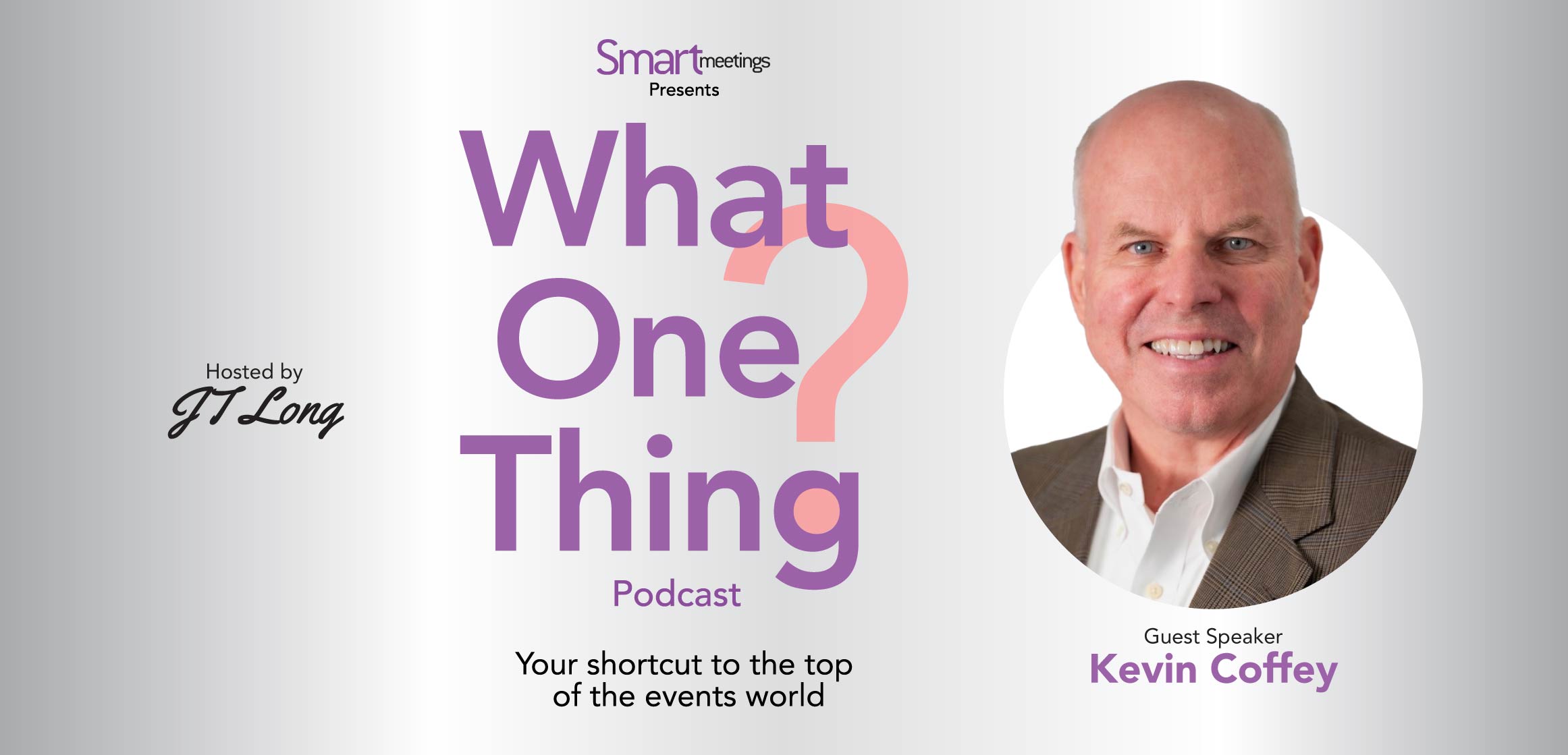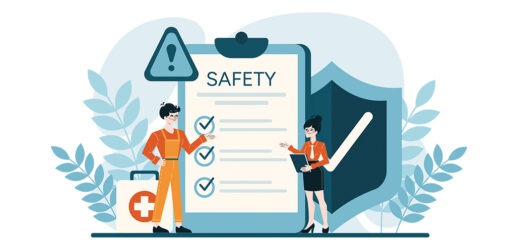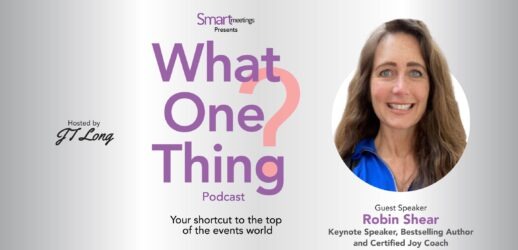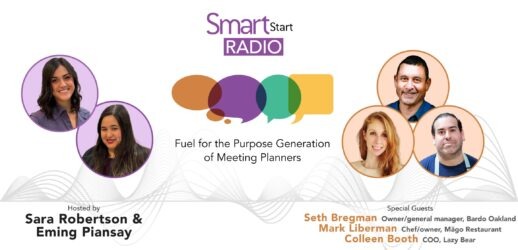In this episode of What One Thing?, a Smart Meetings podcast, host JT Long, vice president and content director of Smart Meetings, explores essential strategies for ensuring safety in an increasingly risky world. JT welcomes Kevin Coffey, a travel security and meeting risk advisor, who brings decades of expertise from his time as a detective with the Los Angeles Police Department’s LAX Airport Crimes Investigation.
Coffey shares critical steps and advice to help meeting planners and travelers safeguard themselves and their guests, drawing on his extensive experience in the field.
JT Long: Welcome back to What One Thing? A Smart Meetings podcast that provides you with a shortcut to the top of the events world by asking successful people what made the difference in their careers and lives.
I’m JT Long, vice president and content director of Smart Meetings, and today we are double-clicking on the steps you need to take to keep your guests and yourself safe in a risky world.
Kevin Coffey: Kevin Coffey is our travel security and meeting risk advisor and trainer. He was with the Los Angeles Police Department crimes against travelers, investigation detail. He was a detective. He understands what’s going on and helps keep everyone safe. Welcome Kevin, thank you.
KC: Thank you guys. Appreciate being here. Love your publication. I’ve spoken at your events before, so this is a nice continuation.
JL: And we love chatting with you, Kevin. I always learn something. Now, tell me, did you grow up dreaming of being a detective? How did you end up in your career?
KC: Oh, God, I get this a lot, so I got to try to make it short, right? Being a speaker, there’s always a long story. So, my mother’s first husband was a police officer in Cleveland, Ohio, back in the 50s, and unfortunately, he died on the job. My mother subsequently remarried, to my father, but she kept a picture of him, her first husband, on the mantle. I have a stepsister from that marriage, the first one where he passed.
As a child, I always looked up at the picture of him in uniform. I’m a child of the 60s—the very early 60s, by the way. I think I was around 8, 9, or 10 or so. That was a typical mindset back in the 60s. People would ask you, what do you want to do when you grow up? And it was, you know, doctor, lawyer, police officer, firefighter, and related. Then I started watching a TV program called Adam-12 and Dragnet, and the rest is history.
I’ve been fortunate that I’ve had an entire life in a career, vocation, or some would say, a calling, that has provided me with great passion in both my professional and personal life. I love my job, and I love helping others, which, in many ways, is very similar to those I’ve met in the meetings, travel, and hospitality industry.
JL: So I have to ask you, because my father was in law enforcement and hated TV cop shows, except for Barney Miller, once you got into the role, did you find that it was very similar to what you’d seen on the screen?
KC: Yes and no. So, the original Adam-12 and Dragnet, back in the day, were very realistic to a certain degree. One thing, though, is that everything comes to an end right at the end of those 30-minute shows. Then, you fast forward to the shows of today. There’ve only been a couple that I felt really captured what goes on in major cities.
There was a series called Southland. It was a representation of LAPD—very true, very realistic about the day-to-day personal events we’re involved in. But the latest one that ended is Bosch on Amazon Prime. That’s based on an LAPD homicide detective. Very true to real life, with a lot of the back-and-forth idiosyncrasies.
That’s because on that show, they have a lot of retired LAPD and active detectives working on it to help flesh out the script and really get to the real issues.
JL: I love that! See, not only do I get travel tips from you, I also get TV recommendations! I always learn something when we talk.
So, you had the crimes against travelers investigation detail. How did you make the transition to private life, to being a speaker, and how did catching bad guys help you move into managing risk for meeting planners?
KC: It touched my life three different times during my 35-year career with LAPD.
My first was as a young street cop working a foot beat on Hollywood Boulevard, and I was assigned to a special detail back in 1983 to clean it up with a large number of officers for the 1984 Olympics. We knew this was a unique event. We’re going to have people coming again for the next Olympics, but back then we were getting hundreds of thousands of visitors. Many of them would go to Hollywood Boulevard. But back in the 80s, Hollywood was very different, like a lot of major cities in the U.S.
They assigned us to work the Boulevard to clean it up because we had some issues back in the day. I was assigned to a unique detail at The Chinese Theater. Many people have visited it during their trips, but it was also a hotspot for pickpockets—a prime hunting ground for them.
I was a young cop, and they would sometimes put me undercover to try and catch these thieves who targeted tourists. These tourists would stop to look at the handprints and footprints, and they were prime targets for wallets sticking out of pockets.
But when I would write police reports for these travelers, especially international ones, I saw the devastation of losing their wallets, IDs, and credit cards. It could really ruin their trips. That was the first time I realized how wrong it was to take advantage of people when they were down.
The second time was when I started at LAX airport’s crimes investigation detail. I investigated crimes like luggage theft, purse theft, and parking lot break-ins, among other incidents. I had a high-end business traveler sit across from me after losing his laptop bag, almost in tears. He said, “I don’t think I can even do the meeting where I was supposed to present in four hours.” I saw the devastation that theft causes firsthand.
The third time was when I appeared on Oprah and began speaking at large corporate sales meetings about how to avoid mistakes while traveling. I’ve been doing it ever since. I started working with meeting planners who were often unaware of potential risks, and that’s when I realized how much overlap there is between what I did in law enforcement and what event planners deal with.
JL: We are so lucky to have you in the industry and on the podcast. So what is it that meeting planners get wrong about protecting attendees?
KC: Let’s look at the entire event, not just the attendees. I hate to paint this with a broad brush, and by all means, this doesn’t apply to all meeting professionals. But I think most don’t really think much about risk from an awareness, prevention, mitigation, or response standpoint.
If you’re dealing with a large event with a C-Suite attending or an event with obvious risk features like weather, corporate security will likely be involved, and they’ll hire extra security. But for the day-to-day, bread-and-butter meetings and events, planners don’t always bring the risk discussion into the picture. This is what I want them to start paying attention to—whether it’s a small meeting at a local hotel or a medium-sized one, risk should be considered.
JL: So it sounds like the biggest miss is not considering risk at every single event, is that what you’re saying?
KC: Absolutely, JT.
When I go through my presentation, I ask a series of 10 questions. Most people will go, “Isn’t that somebody else’s job? Isn’t that somebody else’s responsibility?” To a certain degree, yes, but we’ve all learned that we can’t always depend on someone else in a time of crisis. They won’t always be there.
When you and I first started in this business, JT, if you had to call security or the front desk during an emergency at a hotel or event center, what would you see as soon as you walked out of the meeting room?
JL: The courtesy telephone?
KC: Exactly! You and I know those don’t exist anymore. Occasionally, you’ll see one in an older property that hasn’t been renovated, but for the most part, they’re gone. If an emergency happens now, there’s no quick way to contact the front desk or security. You’d have to find a hotel staff member or know the phone number yourself. This is just one example of a risk we’re not thinking about.
JL: Like you said, it really is a partnership. Everyone needs to be planning ahead and having those important pieces of information at their fingertips.
KC: Absolutely. You’ve got to take into consideration the event, the location, the organization’s culture, and the resources you have. The goal is to avoid some of the issues that could occur, like theft in meeting rooms or projectors being stolen, which is an issue in some major cities. There are simple, low-cost things we can implement to reduce the risks for our events.
JL: I love that! What are some of the low-cost things we can do to protect our meetings?
KC: There are several basic steps that meeting planners can take, even if you don’t have a big security budget. One of the simplest is to conduct a walk-through of the venue before the event. When you’re there, look for access points. Where are the entrances and exits? How can someone get in or out without being noticed? Can you secure the meeting room during breaks?
Another one is badge control. You need to ensure that only attendees are allowed into your event spaces. That means creating a system for checking badges or having a registration table staffed at all times. Some venues allow open access, and without clear identification, it’s hard to know who belongs in the room.
Also, if you’re using AV or other expensive equipment, don’t leave it unattended during breaks or overnight. I can’t tell you how many times I’ve heard of projectors, laptops, or even phones being stolen during an event because they were left sitting in the room. Lock these items up, or hire someone to monitor the room while it’s empty.
JL: Those are really practical tips. What about some of the bigger risks? What if a fire breaks out or there’s an active shooter situation?
KC: For larger risks, it’s essential to have a plan in place. First, identify your nearest exits and make sure attendees know where they are. You should always have an evacuation plan, and depending on the size of your event, a detailed emergency response plan.
Next, communicate with the venue about their emergency procedures. For example, ask what they do if there’s a fire or a medical emergency. Get to know the staff responsible for security and ask them about their protocols for various situations, like active shooters.
For active shooter scenarios, having a well-thought-out response plan is crucial. I always recommend meeting planners work with local law enforcement or hire a security expert to train staff on how to handle such situations. It’s not pleasant to think about, but it’s better to have a plan than to be caught off-guard.
JL: Absolutely. We can’t ignore these possibilities, even if it feels uncomfortable to discuss them.
KC: Right. And one thing I always emphasize is communication. Make sure all the key people know what the plan is—whether it’s your event staff, your venue contact, or even your attendees, if necessary. That way, if something goes wrong, you can react quickly.
JL: That’s such great advice, Kevin. Do you see the meetings industry becoming more aware of these risks?
KC: Slowly but surely, yes. After certain high-profile incidents, like the Las Vegas shooting at a music festival in 2017, or various acts of terrorism in different parts of the world, people are becoming more aware. It used to be something no one wanted to talk about, but now it’s becoming part of the conversation, which is a step in the right direction.
However, there’s still a long way to go. Some planners still think, “That’s not going to happen at my event.” But the truth is, we don’t get to decide when a crisis happens. What we can do is be prepared. And I’m seeing more planners asking the right questions, thinking ahead, and integrating risk management into their event planning process.
JL: That’s so encouraging to hear. We need to normalize these conversations.
KC: Exactly. Just like you wouldn’t skip considering the food menu or the seating arrangement, you shouldn’t skip thinking about safety. It should be part of the standard process. And once it becomes second nature, it doesn’t take up much more time or money. It’s just about integrating it into your routine.
JL: I love that mindset. So, what’s one thing you’d tell meeting planners to start doing today to keep their events safe?
KC: If I had to choose one thing, it would be to conduct a risk assessment for every event, no matter how small. Take a look at the venue, the number of people attending, and any specific risks that come with the location or the event itself. Then, plan accordingly.
Even just thinking through those things will put you ahead of the game. And it’s not just about protecting your attendees—it’s about protecting yourself as a planner. If something goes wrong and you haven’t done your due diligence, you could be held liable. So, it’s worth taking the time to assess the risks and put a plan in place.
JL: That’s great advice, Kevin. Thank you so much for sharing your wisdom with us today. I feel better prepared already, and I’m sure our listeners do, too.
KC: My pleasure, JT. I’m always happy to help keep people safe, especially in the meetings industry.
JL: Well, we’re grateful for you! And thank you to our listeners for tuning in to What One Thing? We hope you took away some valuable tips today to make your next event even safer. We’ll see you next time!
For more information about Kevin Coffey’s presentations, visit www.KevinCoffey.com. To view additional videos of Kevin sharing additional travel skills and meeting risk tips, tricks, and resources, visit his LinkedIn page https://www.linkedin.com/in/kevin–coffey/
This article appears in the September 2024 issue. You can subscribe to the magazine here.




